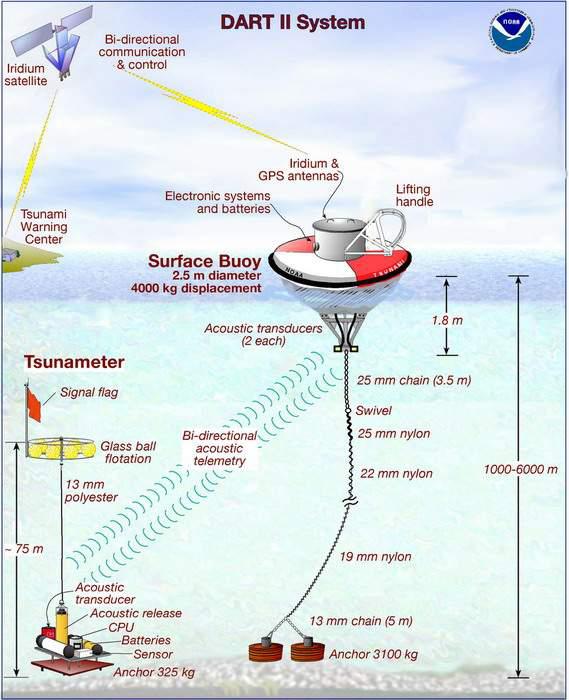
Acoustic Modem
An acoustic modem is used to transmit data underwater, much as telephone modems are used to transmit data over phone lines. An acoustic modem converts digital data into special underwater sound signals. These signals are then received by a second acoustic modem and converted back into digital data. Acoustic modems can be used for underwater telemetry, ROV and AUV command and control, diver communications, underwater monitoring and data logging, and other applications requiring underwater wireless communications.

Courtesy of Link-Quest Inc.
The U.S. National Oceanic and Atmospheric Administration (NOAA) Deep-ocean Assessment and Reporting of Tsunamis (DART) program uses acoustic modems to transmit data and provide coastal communities in the Pacific, Atlantic, Caribbean and the Gulf of Mexico with faster and more accurate tsunami warnings. Tsunami waves are generated when an earthquake causes the seafloor to move. They can cause great damage when the waves build as they come ashore. Pressure sensors that are deployed on the seafloor can detect tsunamis.
Through the DART program, NOAA has installed a network of bottom pressure sensors near regions with a history of tsunami generation, to measure waves as they spread. Pressure data are transmitted to a near-by surface buoy via an acoustic data link using underwater modems. The data are then relayed to scientists on land in real-time via satellite. Scientists can also request real-time data independent of the automatic detection system. The data are used to provide early warnings of a tsunami before it comes ashore.

Schematic of a NOAA DART II Buoy Station. Each DART station consists of a bottom pressure sensor (”Tsunameter”) anchored to the seafloor and a companion, moored surface buoy. An acoustic link transmits data from the bottom pressure sensor to the surface buoy, and then satellite links relay the data to NOAA tsunami warning centers, giving NOAA forecasters real-time data about tsunamis that could potentially impact coastal areas. Courtesy of NOAA.
我想说两句